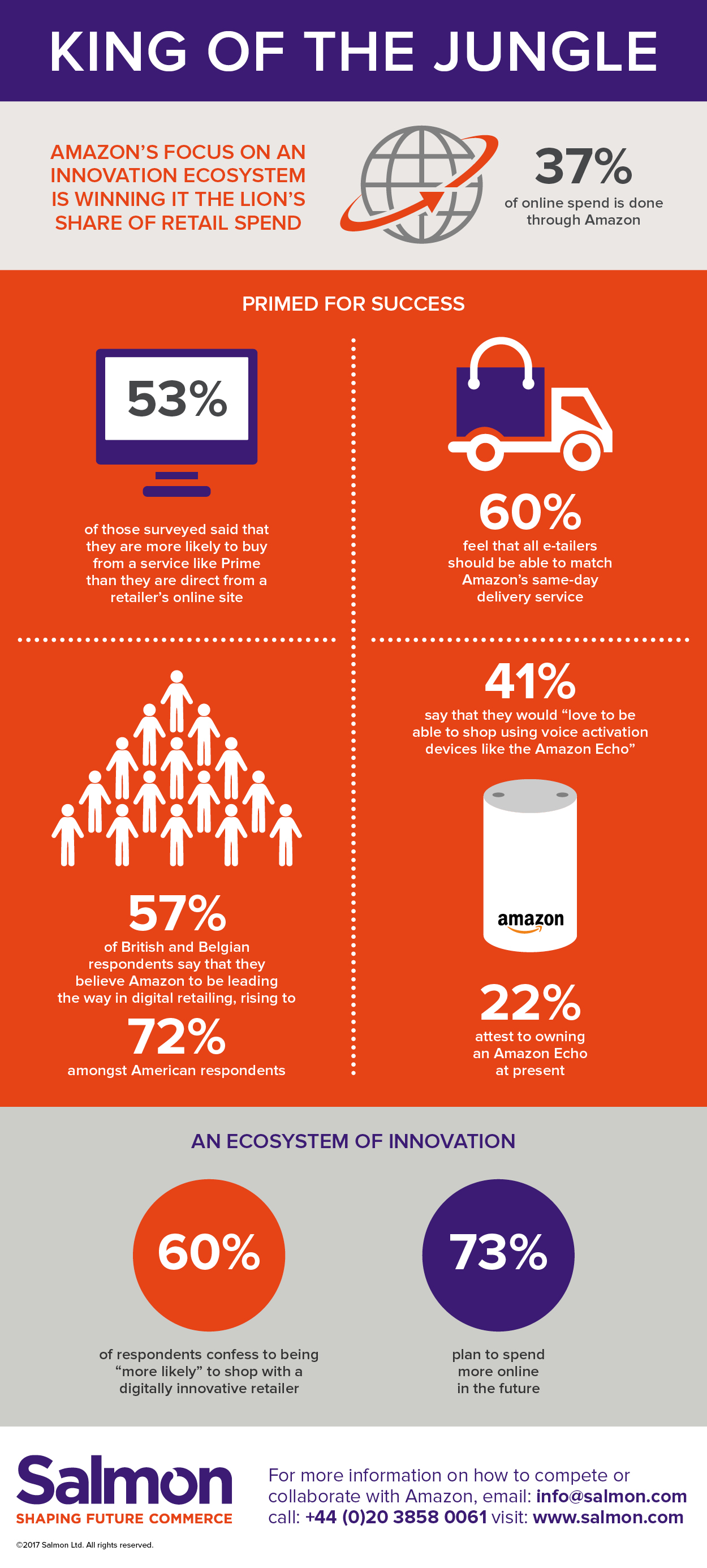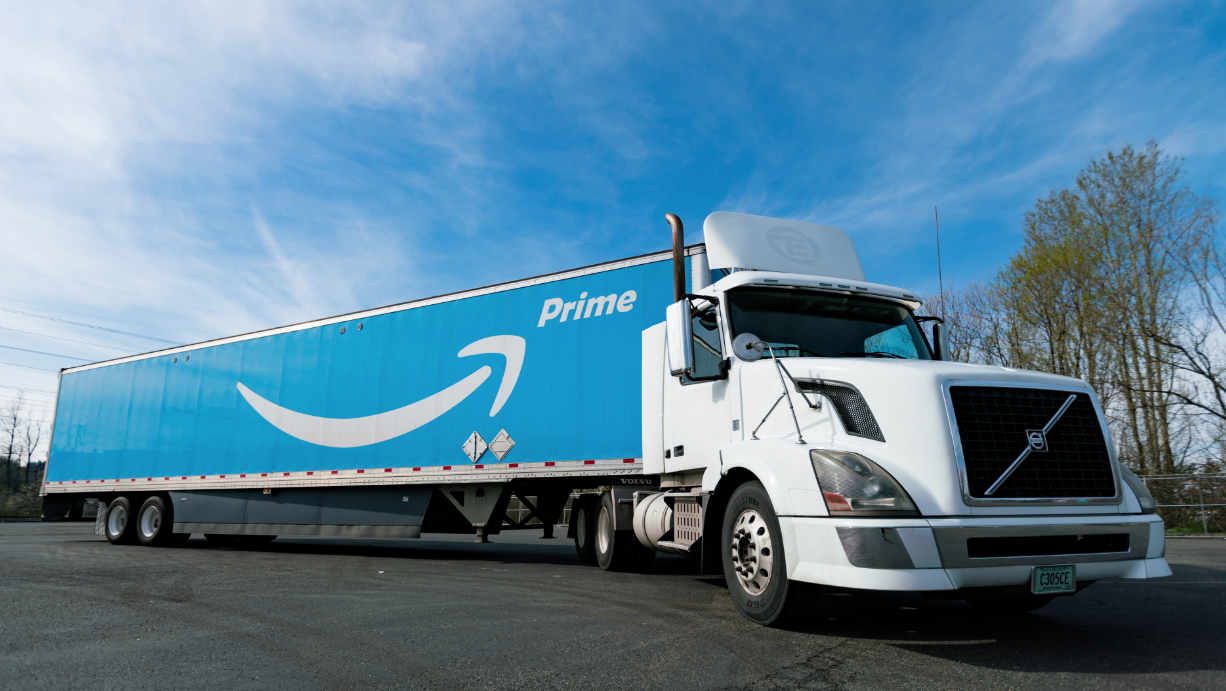Tomorrow, 11th July, marks the third annual Prime Day, where Amazon Prime customers will have their pick of over hundreds of thousands of deals. Last year, Prime customers ordered more than 20 million items from SMEs across more than 50 categories, and according to Amazon, 40per cent of all Prime Day lightning deals this year will come from small businesses and entrepreneurs, an increase of 50 per cent more lightning deals compared to last year.
Amazon also revealed that half of the items sold on its global sites are from SMEs, many of whom use Fulfilment By Amazon to grow their business. But what does mean for UK SMEs? According to research from e-commerce consultancy, Salmon, almost 40 per cent of online spend is done through Amazon, and it is only set to rise, as 73 per cent of consumers say they will increase their use of digital shopping channels in the future.
Amazon has fashioned a model that is now setting the expectation of customers’ for all retailers. In fact, over half of all international consumers surveyed say they are more likely to buy from Prime than a retailer’s online store. This highlights the increased adoption of subscription services in retail and the risk to brands and their direct to consumer (D2C) online business models. Owing to the high expectations Amazon has now set, 60 per cent say they feel same day delivery should be offered by all online retailers.
“The whole Prime premise is built around providing a same-day or next-day delivery. Amazon has even created its own market peaks with its Amazon Prime Day. We call this ‘proactive peak formation’. Its purpose is to encourage Prime membership and keep customers ordering exclusively through Amazon and away from other brands. With companies like Tesco launching their own one-hour delivery service, we’re seeing other retailers looking to halt Amazon’s dominance,” Hugh Fletcher, global head of consultancy and innovation at Salmon said.
“Retailers need to consider a balanced strategy on how they compete or collaborate with Amazon. Amazon has seized the day. Put simply, they fulfil their customers’ expectations better than most other retailers in the market. As consumers increasingly look to service, speed and convenience – rather than brand – Amazon sets the standard that others must follow or risk being locked out.”
Consumers believe Amazon is the most digitally powerful brand out there, ranking considerably higher than its nearest competitor. The vast majority (72 per cent) of US consumers said that Amazon is “leading the way in digital retail”, with the UK and Belgium also ranking them as the market leader in e-commerce (57 per cent).
“While many retailers are still struggling with establishing omni-channel strategies, Amazon is taking omni-channel innovations to the next level through its partnerships, delivery options and multiple interfaces, which is what retailers must do if they’re to survive,” Fletcher added.
“These findings unveil the harsh reality for retailers that need to wise up to the threat of Amazon and create strong digital services both quickly and to a high standard. Amazon is seemingly always ten steps ahead of other retailers, and its continued expansion into other markets demonstrates its intent to sew up every industry in sight. Retailers must ask themselves, are they happy to give up their interface, their data, their customer, and their future, and become just another brand consigned to history? Or will retailers revolutionise their own offerings to combat the likes of Amazon and secure their futures?”
Its innovative products could also play a part in that fact: over four in ten say they would love to shop with Amazon Echo, and are currently using or planning to use Amazon Dash in the next year. This suggests that it’s high time retailers up their technological offerings to keep up or risk getting left behind. Technology in high street stores in the UK is failing to match the online shopping experience according to a separate consumer study by Fujitsu, which reveals 75 per cent say Amazon or eBay would become their go-to store if they had a physical presence.
“Amazon’s Prime Day is now an annual and expected event. Where most retailers will wait for more traditional times of the year to run their sales, such as at the end of the summer season, or during Black Friday and the Christmas sales, Amazon goes against the tide and runs its own peak day. Retailers need to find ways to match the likes of Prime Day and ensure they are differentiating themselves from their competitors to attract new customers through innovative services that complement their brand,” said Rupal Karia, MD, retail and hospitality, Fujitsu UK & Ireland.
Consumers want to be able to shop with flexibility – sometimes online, sometimes in-store – and expect the experience to be seamless regardless of the channel they choose, and it seems that Amazon resonates as the retailer of choice across the board, according to Karia. Fujitsu’s research found that no matter what age, consumers feel that they would prefer to shop with Amazon. 72 per cent of 18 to 24 year-olds, 78 per cent of 25 to 30 year-olds, and even 73 per cent of over 60s all believe that if Amazon had a physical store, it would quickly become their preferred store to shop in.
“Retailers need to take note and ensure that they too are providing their customers with the relevant channels for their shopping needs and not run the risk of freezing out customers for failing to do so,” she added.
“Amazon has been very good at offering services that they don’t even know they want until they become available. As a result this has altered the mind-set of consumers who want to shop how they want, when they want, and that Amazon is the best provider for this on demand way of shopping.” Similar to the Salmon research, this study found that eight in 10 consumers would spend more with retailers that have a better technology offering, which means those unwilling to embrace technological advancements will not reap the rewards.
This infographic from Salmon highlights this consumer trend in greater depth.







